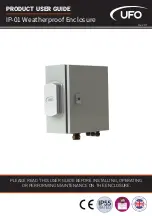
Copyright © 2006 by AZiO Corp. – www.aziocorp.com
28
Q: Does the External Drive Kit support drives larger than 250gb?
A: Yes, our hard drive kits does not have a capacity limitation as of now.
Q: Can I use both the USB 2.0 and FireWire/eSATA interfaces of my
Drive at the same time?
A: No. If you do, you may lose data, damage the Drive, or even damage your
computer.
Q: Why doesn’t the FireWire Cable fit my FireWire port?
A: The supplied FireWire cable uses 6-pin connectors at both ends, but many
laptops have a 4-pin FireWire port. In order to connect the Drive to your laptop
via FireWire, you will need to obtain a 6-pin to 4-pin cable.
Q. Why doesn’t the eSATA Cable fit my SATA port?
A: The supplied eSATA cable uses the new External SATA standard at both ends,
but many computers still uses the older internal SATA “L-Shape” interface
standard. In order to connect the Drive to your computer, please use the
included eSATA to SATA converter bracket.
Q. What’s the difference between SATA and eSATA?
A: Initially SATA was designed as an internal interface technology. The original
cable design for internal use does not address EMI, ESD, or other attributes
required by an external interconnect. As the desire for external Serial ATA drives
became more popular, the Serial ATA II Work Group developed the External
Serial ATA (eSATA) standard to satisfy these requirements.
Q. Why does my drive shows less capacity than specification?
A. Hard drive capacity is defined in terms of decimal (base 10) capacity. In
decimal notation, one megabyte (MB) is equal to one million bytes and one
gigabyte (GB) is equal to one billion bytes. We are most accustomed to the
decimal system in everyday life. However, computer use the binary (base 2)
numbering system. In the binary number system, one megabyte is equal to
1,048,576 bytes, and one gigabyte is equal to 1,073,741,824 bytes.








































